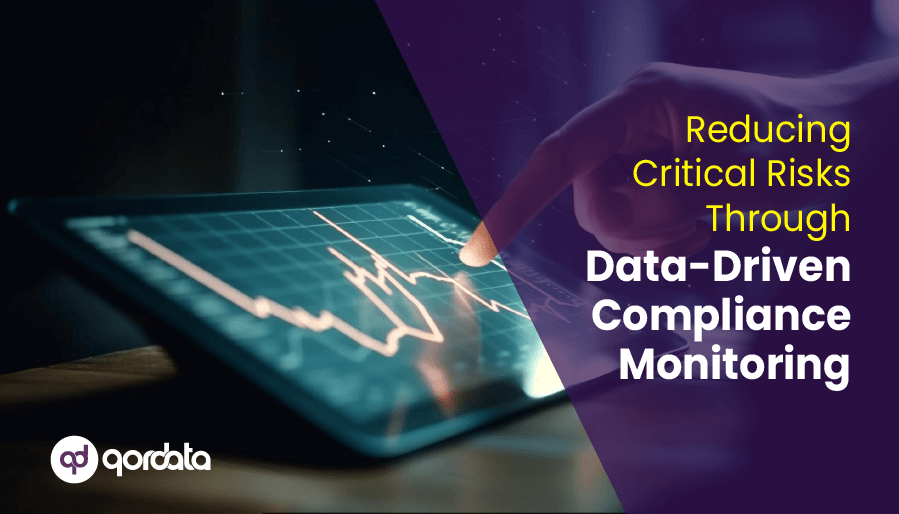Table of Contents
ToggleCompliance programs are constantly being enhanced by companies in response to the heightened compliance demands of the government along with a variety of other drivers, i.e., settlement requirements and industry standards – Compliance monitoring happens to be the one way through which companies can efficiently and effectively upgrade their compliance program and achieve success in establishing a proactive program that can handle ever-increasing compliance demands.
In addition, an effective monitoring program that includes data analytics can keep a life sciences organization ahead of high-risk, critical issues and avoid violations.
Driving operational excellence and supporting compliance teams with monitoring and data analytics can reduce their burden, enabling them to shift their focus to a more strategic approach to compliance.
A well-designed compliance monitoring program can also help the organization measure compliance while delivering sustainable value to the organization.
Let’s dive further to understand compliance monitoring and its importance in today’s rules and regulations-heavy business landscape.
Compliance Monitoring: Explained
Compliance monitoring is the process of observing, managing, and reviewing Life Sciences company activities and processes to identify and remediate risk. In short, it is the ability to manage the full scope of a company’s activities to identify and reduce business-critical risks.
Through compliance monitoring, life sciences organizations assess the quality of their company’s compliance program and see how well their business operations are structured to meet compliance obligations required by government agencies.
In the life sciences industry, compliance teams are responsible for tracking and monitoring compliance activities, making day-to-day activities easier to monitor, remediate, and control.
It’s up to compliance teams to monitor compliance activities manually or through an Excel sheet or get a data-driven compliance monitoring software that enables them to do it instantly with a few clicks, let alone avoid the risks of missing a few critical details.
Note: In a world of heightened scrutiny on compliance programs’ effectiveness, changes in the rules and regulations, and pressure from the regulatory bodies, moving forward with data-driven compliance software is the strategic action that life sciences should take.
Laying the Foundation of a Compliance Monitoring Plan
While laying down the foundation of your compliance monitoring plan, experts recommend starting with a comprehensive review of the risk that your life sciences organization faces in the present.
By gaining clarity on the status of your compliance program and the rules and regulations provided by OIG & DOJ, you will be able to ensure that there are no gaps in the monitoring plan that you have created, and you will be aware of the areas that you may want to monitor closely.
Moreover, the risk of violations is higher in some areas. Therefore, analyzing historical and real-time data to determine high-risk areas in your organization and then allocating resources to such areas to avoid noncompliance is yet another tactic that should be a part of your compliance monitoring plan.
Also, start measuring the effectiveness of your current compliance practices to identify areas for improvement. Evaluating reports extracted through compliance monitoring can reveal insights through which you can improve your compliance program’s efficiency while enhancing synergies between teams.
In addition, the unparalleled advantage of automation in the compliance monitoring domain makes monitoring even more robust. As compliance requirements grow and continue to become multi-faceted, automation can enable compliance teams to automate certain manually performed tasks, significantly amplifying the speed at which compliance activities and operations are being monitored and carried out.
Automatic generation of reports, insightful dashboards, digital tracking of compliance activities, and the option to share in-depth information regarding compliance activities with the shareholders are only some of the many benefits that compliance solutions can provide to life sciences and compliance leaders.
What Makes Compliance Monitoring A Priority for Leaders?
Compliance monitoring provides compliance leaders visibility into an organization’s compliance activities. It enables them to see the underlying operations and assess whether they’re being conducted compliantly.
More broadly, compliance monitoring can help compliance teams identify areas of risk and noncompliance. Whether accidental, intentional, external, or internal, through compliance monitoring, compliance professionals can identify violations and quickly deploy remediation to resolve such issues.
Moreover, monitoring a process is the first step toward improving it. Understanding loopholes and gaps within an existing compliance program or activity will enable you to develop an even more robust plan and run a few checks against it to ensure that it is the best in class and ready to address your current challenges.
Choosing Your Compliance Monitoring Solution
Corporate compliance in the life sciences industry touches all areas – sales and marketing, operations, finance, conduct, ethics, and more. In addition, companies must abide by the rules and regulations set by the government to thrive.
What makes compliance challenging is the ever-evolving requirements and the heightened expectations. However, there’s a solution that enables life sciences companies to surpass these challenges and ensure seamless and compliant business operations.
qordata’s compliance monitoring solution is designed to help life sciences and compliance teams cut the complexity out of compliance and manage, review, and monitor compliance far more effectively and easily than ever before.
Other relevant reads:



